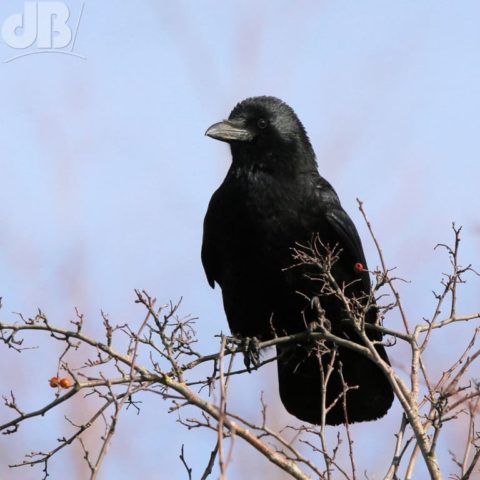A wildlife snapshot can have many flaws…look at this photo of a Carrion Crow I took today at RSPB Fen Drayton…not so great…but it has two redeeming features that can serve as top tips.

First, the eye is photographically “sharp”. Unless there’s a reason to focus on some other aspect of an animal, whether bird, lion, human, the eyes have to be pin sharp in the photo to make it work. Moreover, in a portrait where you can see both eyes, the “leading” eye, the one nearest the camera needs to be sharp.
Secondly, for an animal that is pretty much completely black, including its eyes, it’s wasted shot if you haven’t caught a catchlight. What’s a catchlight? The tiny pinprick of light reflected from the eye. For birds that have black heads, it’s essential for anything like a half-decent shot to have catchlights in the eyes. Moreover, strictly speaking, the same applies to all eyes in any photo, wildlife, pet, human portrait. If you haven’t got that sparkle, that glint in the subject’s eye, the rest of the photo can be perfect, but it will ultimately look lifeless, dead in the eyes.
You can use flash, off-camera flash or natural light, manual or autofocus, but if you’ve snapped the subject a dozen or so times and only one of the photos has a catchlight in the eye, then that’s the one to share, print, publish, pretty much regardless of any other technical aspect of the shot.